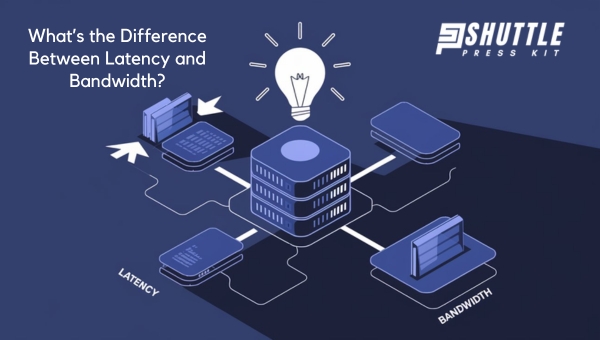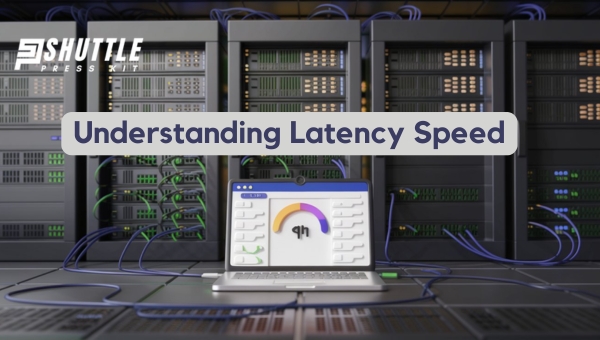Have you ever wondered why videos buffer or web pages take ages to load? Let me unlock this mystery for you by diving into “What Is Latency?” Don’t worry; I’ll keep it simple and straightforward. By the end, you’ll not only understand what latency is but also why it’s so crucial for your everyday online experience.
Latency is the time it takes for data to travel from its source to its destination. Imagine you’re sending a letter to a friend across the country. The time it takes for your friend to receive that letter is like latency in the digital world. So, when you click on a link or stream a video, latency decides how long you have to wait before seeing or watching what you want.
What’s the Difference Between Latency and Bandwidth?

| Aspect | Latency | Bandwidth |
|---|---|---|
| Definition | Latency is the time it takes for data to travel from the source to the to travel from the source to the destination. It’s often measured in milliseconds (ms) or seconds. | Bandwidth refers to the maximum amount of data that can be transmitted over a network in a given period. It’s usually measured in bits per second (bps), kilobits per second (kbps), megabits per second (Mbps), etc. |
| Example | Latency is like the time it takes for a package to arrive after it’s shipped. | Bandwidth is like the size of a pipe. A wider pipe (higher bandwidth) can carry more water (data) at once, while a narrower pipe (lower bandwidth) can carry less. |
| Importance | Lower latency is crucial for real-time applications like online gaming, video conferencing, and VoIP calls. | Sufficient bandwidth is necessary for transferring large files, streaming high-quality video, and accessing multiple devices simultaneously without slowdowns. |
Why Latency is Crucial?
Latency, often referred to as lag, plays a pivotal role in the digital realm, profoundly impacting user experience and overall system efficiency. In environments where real-time interactions are essential, such as online gaming or live video streaming, high latency can create delays that detract from the immediacy and fluidity of the experience.

Lower latency ensures more synchronous communication between devices and servers, enabling instant feedback and smoother operation. This is particularly vital in scenarios demanding rapid response times; for instance, in financial trading platforms where milliseconds can mean the difference between profit and loss.
Moreover, in the context of IoT (Internet of Things) applications or telemedicine services, reduced latency is synonymous with increased reliability. Here, it’s not just about speed but also about ensuring that critical data is transmitted accurately and promptly to perform time-sensitive actions – whether it be controlling autonomous vehicles or conducting remote surgeries.
High latency can compromise the effectiveness of such services by introducing unnecessary risk through delayed responses. As our reliance on internet connectivity burgeons across various sectors from education to healthcare, prioritizing low-latency solutions becomes indispensable for facilitating a seamless and efficient digital experience.
Understanding Latency Speed
Latency speed, often referred to simply as latency, plays a crucial role in how swiftly data is transmitted across a network from one point to another. Generally speaking, a latency below 50 milliseconds is heralded as excellent because it minimizes delays significantly.

Latency above this threshold can degrade the user experience by introducing noticeable lags in real-time applications and services. The implications of high latency are far-reaching, affecting everything from the smooth operation of cloud-based solutions to the responsiveness of online gaming environments.
Effective Strategies for Minimizing Network Latency
Network latency refers to the time it takes for a data packet to travel from its source to its destination. High latency can severely affect the performance of online activities, such as gaming, streaming, and video conferencing, leading to delays and buffering issues. By adopting certain measures, users can significantly reduce latency and ensure a smoother online experience. Here’s how:
- Connect Using Ethernet: For a more stable and faster connection, use an ethernet cable to connect your device directly to the router instead of relying on Wi-Fi.
- Limit Bandwidth Usage: Make sure to close any unnecessary programs or pause devices that might be consuming bandwidth in the background.
- Stop Background Downloads: Ensure there are no ongoing downloads or auto-updates happening in the background which might be using up your internet connection.
- Reboot Your Router: Occasionally restarting your router can refresh your connection. Simply unplug it from power for a minute before plugging it back in.
- Update Device Drivers: Keeping the drivers for your router and devices up-to-date ensures optimal communication between them, reducing potential delays.
- Opt for Lower Latency Internet Services: If feasible, consider switching to an internet service provider known for offering lower latency connections.
By implementing these strategies effectively, users can achieve a noticeable reduction in network latency.
Also Read: Starlink Offer Phone Service? Discover Now!
What causes increased internet latency?
High internet latency is often due to network congestion, the distance between your device and the server, or outdated hardware.
How can I reduce my internet latency?
Improving internet latency can involve using a wired connection, optimizing your router’s settings, or upgrading your internet plan.
Does internet speed affect latency?
While internet speed and latency are related, they are not the same. Fast speeds don’t guarantee low latency, but they can help reduce buffering and loading times.
Can using a VPN increase internet latency?
Yes, using a VPN can increase latency since it routes your internet connection through an additional server, potentially increasing the distance data travels.
Also Read: Starlink Obstructions: How to Gauge Too Much Interference?
Conclusion
Latency is a term that can feel complex, but it boils down to a simple concept: It’s the time delay between when an action is performed and when its effect is experienced. In the realm of computing and telecommunications, latency is crucial because it significantly impacts user experience.
A lower latency means that web pages load faster, online games respond more promptly, and video calls are smoother. As technology advances, the quest to reduce latency continues because, in the digital world, speed and efficiency are king.
